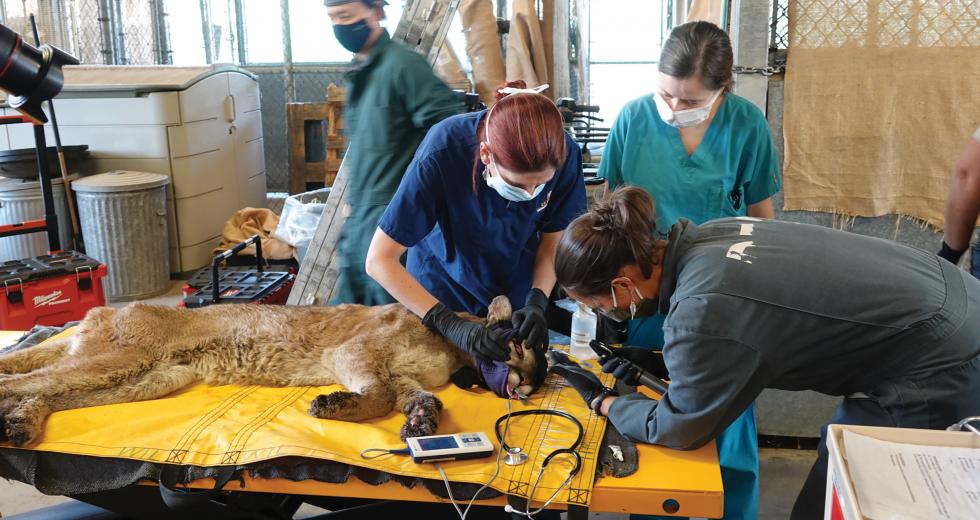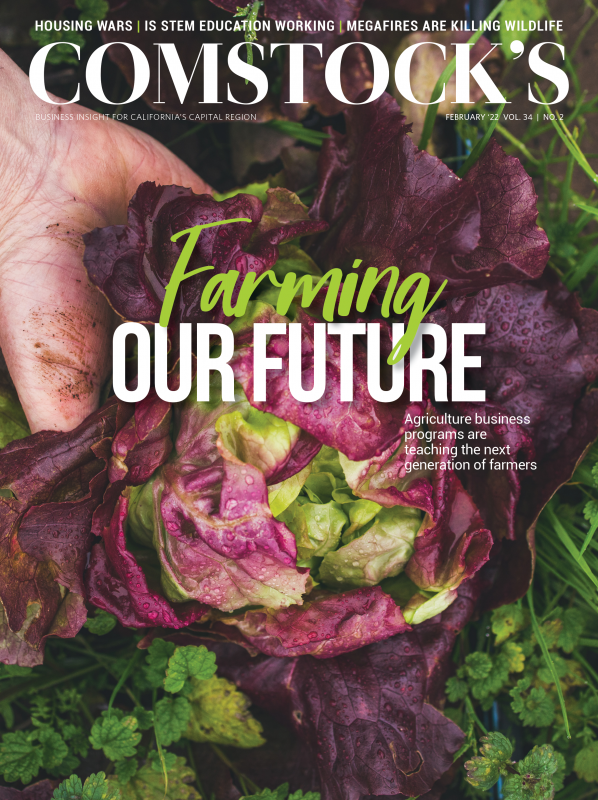There was no way this young bobcat was going to make it, thought Sallysue Stein. It came in growling and snarling with fifth-degree burns down to the bone from the Camp Fire, the most destructive wildfire in California’s history that killed 85 people and wiped out the towns of Paradise and Concow in Butte County in 2018. Stein founded Gold Country Wildlife Rescue in Auburn in 1991, and this was the first time an animal was brought in injured from a wildfire. Stein would soon find more and more burned animals coming each year.
“We have these megafires and super-hot fires that we’ve never had before,” Stein says. “These fires are so hot and so fast. The animals that normally could have escaped them can’t escape them now.”
“We have these megafires and super-hot fires that we’ve never had before. These fires are so hot and so fast. The animals that normally could have escaped them can’t escape them now.”
Sallysue Stein, founder, Gold Country Wildlife Rescue
Indeed, California’s wildfires have been burning hotter and longer than in previous decades. By the end of 2021, the California Department of Forestry and Fire Protection reported more than 8,600 wildfires that consumed nearly 2.6 million acres and destroyed about 3,600 structures. The Lava Fire alone burned 41 square miles west of Mount Shasta in Siskiyou County. Cal Fire keeps records of acres burned, structures destroyed and loss of human life in each fire, but there are no records of how many animals die or are injured by wildfires. What happens to the animals displaced by these infernos?
“I feel sorry for them because they’re running out of places to go,” Stein says.
Dr. Eric Johnson is a veterinarian and associate professor at UC Davis School of Veterinary Medicine who goes out to smoldering wildfire sites to rescue burned animals. The worst hit areas are where there were crown fires instead of ground fires. In crown fires, intense flames shoot quickly up a tree to its crown, engulfing it.
“Most of the time when we get reports of burned or injured wildlife, it’s coming out of those crown fires, which have that sort of appearance that is Mars-like or (a) lunar landscape appearance,” Johnson says. “And in those areas it’s devastating the amount of wildlife and domestic animals that are killed.”
On one search after the 2021 Antelope Fire in the Klamath National Forest in Siskiyou County, Johnson was looking for a bear that was reported burned. He found seven dead animals in a creek bed, congregated together. They died of burns and smoke inhalation.
It was scenarios like this that had compelled UC Davis veterinarians to do something a few years earlier. There was then no standard of care or treatment in place for animals burned by wildfires, beyond burn cream, antibiotics and bandages. Through research, they pioneered a groundbreaking treatment for burned animals that has captured the attention of scientists around the world.
It started with Lucy and Ethel
Lucy and Ethel, two adult bears that were burned in the 2017 Thomas Fire in Ventura and Santa Barbara counties, were the first animals treated for wildfire burns by Johnson and his wife, Dr. Jamie Peyton, also a veterinarian and chief of integrative medicine at UC Davis School of Veterinary Medicine. One of the bears was found soaking her third-degree burned paws in a water fountain. The bears were transported to Rancho Cordova across from Nimbus Dam, where the California Department of Fish and Wildlife maintains the Wildlife Health Laboratory, the only approved rehabilitation facility for large predators in California.
Dr. Jamie Peyton is committed to progressing the knowledge of
animal burn medicine. She received the Innovator of the Year
award from UC Davis in 2019.
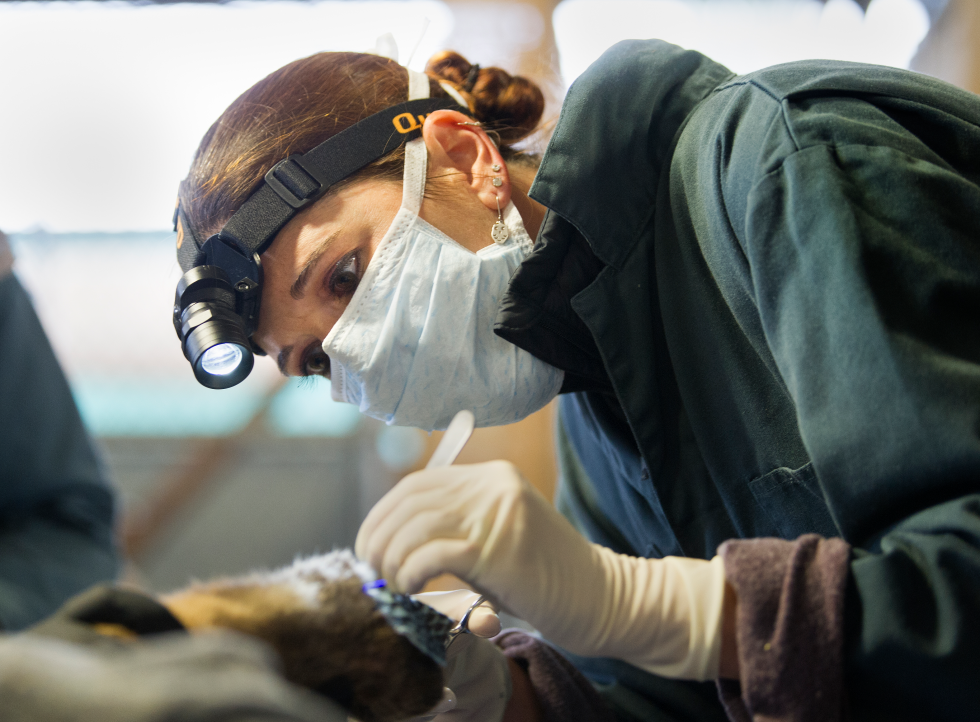
Johnson says he and Peyton brainstormed novel ways to treat the animals’ burns. “We wanted to develop a bandage that would not only serve the purpose of covering the wounds, but also didn’t require a lot of heavy bandage material,” which they could chew and eat, he says. They read about scientists in Brazil who were using tilapia skins to treat human burn patients. The veterinarians tried it on the bears.
“We get fresh fish and harvest the skins. There’s a lot of preparation into sterilizing the fish skins and making sure they are in a state which can be safely applied to burn wounds and other wounds,” Johnson says. The tilapia skins are either sutured or pasted on the injured animal and adhere to the underlying tissue. The animals receive instant pain relief from the collagen-rich fish skins, with tissue growing back on the burned areas within days.
“It’s a real game changer. Once you place it on, they almost immediately feel pain relief because those nerve endings are no longer exposed. The body accepts the collagen,” Johnson says. Lucy and Ethel were walking on their elbows when they came in. After the tilapia treatment, they walked with their feet on the ground.
More burned animals each year
As more burned animals came in, Johnson and Peyton realized they needed a network of volunteers to treat them. In October 2020, the UC Davis School of Veterinary Medicine, in partnership with the DFW, formed the Wildlife Disaster Network, composed of veterinarians, wildlife biologists, ecologists and trained animal care volunteers. They dedicated themselves to treating larger animals impacted by wildfires — bears, mountain lions, bobcats and deer. The network employs a five-pronged approach to their work with animals: reconnaissance, rescue, rehabilitation, release and research.
“Every year our number of cases we have managed and have been requested to work on and been contacted on has gone up,” Johnson says.
Peter Tira, spokesperson for the Department of Fish and Wildlife, says his agency also takes in burned, injured or orphaned animals. “This has been one of our busiest years in terms of animals that have come through,” Tira says of 2021. “We had a lot of orphaned bears as a result of vehicle strikes. Cars hit their mothers. We think the bears are moving because the fires burned areas and they are moving to new habitat.”
Johnson says the number of burned animals statewide treated by the Wildlife Disaster Network went up from 20 cases in 2020 to 30 cases in 2021. Gold Country Wildlife Rescue cared for 5,000 injured animals in 2021, including 30 animals burned in California’s wildfires.
The Wildlife Disaster Network was modeled after the UC Davis-led Oiled Wildlife Care Network, which was formed in 1994. OWCN, a network of trained wildlife care experts, works to rescue and rehabilitate oiled wildlife in California. OWCN was influenced by the disastrous 1989 spill of the oil tanker Exxon Valdez in Alaska that dumped 11 million gallons of oil into Prince William Sound, killing more than 250,000 seabirds, including 250 bald eagles. Volunteers treated surviving birds by washing them in dishwashing liquid.
The main rehab facility burned animals are taken to is Gold Country Wildlife Rescue, which received a license from DFW in 2021 to care for large animals such as bears. At the end of 2021, there were six bears at the Auburn facility.
One of those was a bear cub named Peyton, named after Jamie Peyton. DFW biologists spotted her in a tree with her eyes swollen shut due to fire, smoke and ash exposure from the 2021 Fawn Fire near Redding. They climbed the tree, darted the bear with a tranquilizer, hoisted her down with a rope, put her in a box and took her to Gold Country rescue in Placer County. (Wildlife experts say bears and mountain lions climb trees to escape flames, but when they come down, the ground is often still burning.)
When the bear arrived, it got a typical treatment from Johnson and Peyton: chest X-ray, abdominal ultrasound, echocardiogram, full blood workup and swabs of hair to detect toxins exposure. In addition to the tilapia skin, burned animals are also treated with acupuncture, pulsed electromagnetic therapy and a special burn cream. “We want to ensure they have the highest level of success for return to function and return to the wild,” Johnson says.
That is the ultimate goal of the humans who care for burned wildlife — rehabilitate them and return the animals to their natural environment.
“About 80 percent of the patients we enter into a rehab facility will end up being survivable and released back into the wild,” Johnson says.
The increased need for caring for burned animals has led Gold Country Wildlife Rescue to take on a major expansion. Through donations, the nonprofit is currently building the $250,000 Bear Cub University, which will be able to house at least eight bears. It’s expensive. Feeding the bears can cost more than $5,000 a month. Bears burned in fires need several months to rehab before being released.
Diane Nicholas, an interior designer and animal advocate,
established a sanctuary for injured and orphaned fawns on her
Placer County property more than a decade ago. (Photo by Terence
Duffy)
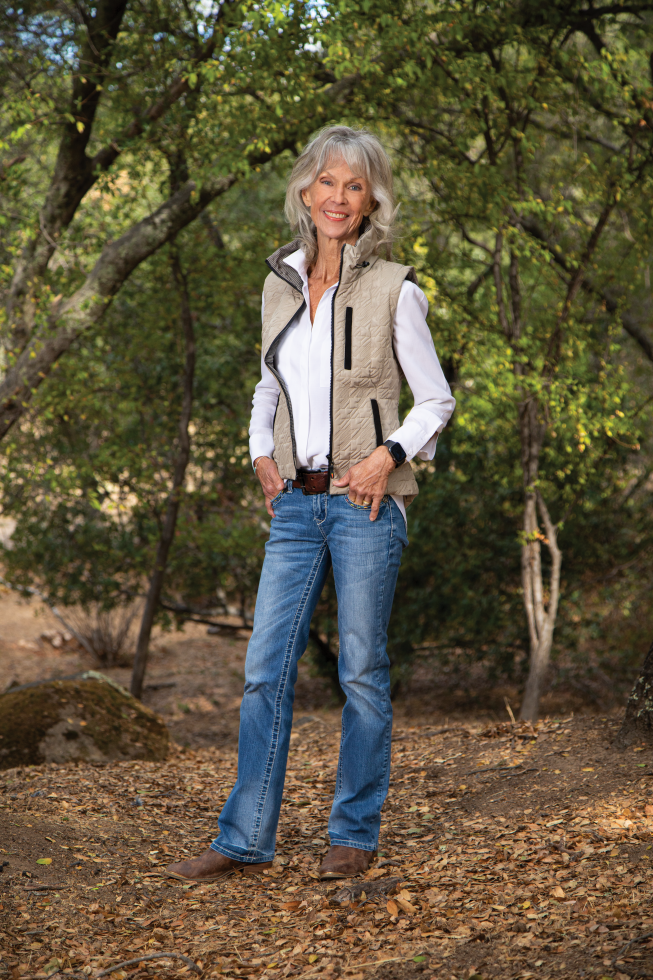
Her rescue, which is licensed by DFW, gets about 5,500 calls a year. She goes out to abandoned fawns with her truck, carefully places them in a crate lined with canvas to protect against injuries, and takes them home to her sanctuary where they are assessed. Many come in dehydrated or starving. “If you look at what’s happening, especially with the wildfires, it’s impacting the redwoods and vegetation is actually being suffocated,” Nicholas says.
Fawns stay in pens cloaked with netting to help obscure their view of the humans caring for them. The trained volunteers must have as little human contact with the fawns as possible so the animals don’t get habituated to them. The workers at Gold Country Wildlife Rescue take similar measures.
Feeding time for fawns at Kindred Spirits, a deer sanctuary
founded by Diane Nicholas in Placer County.
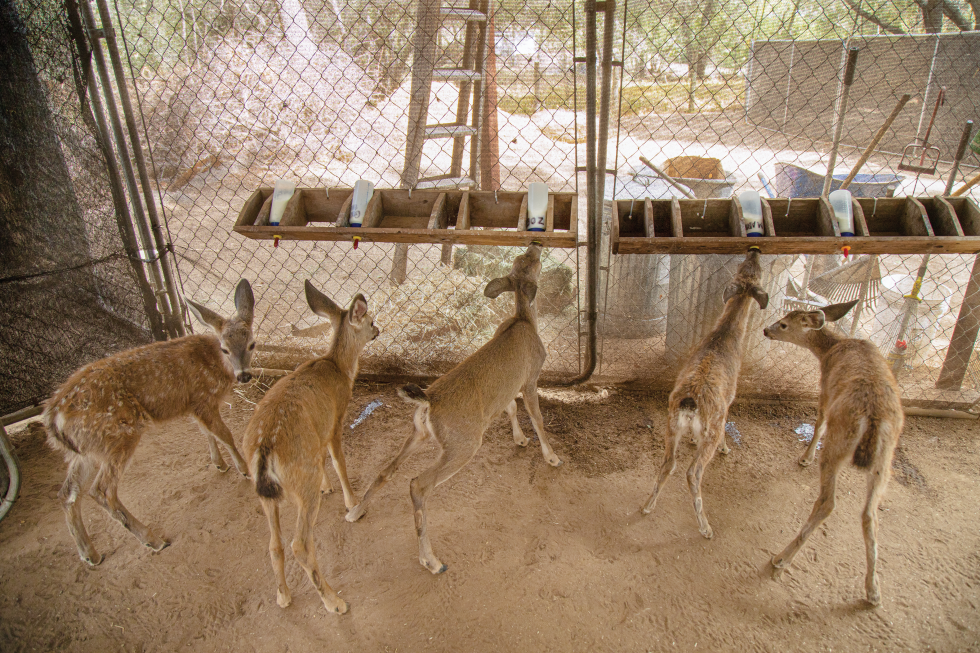
“That’s our challenge with the bears is to not talk around them,” Stein says. “So we have to work to keep them from habituating to humans.” Her volunteers go so far as to put on fox masks when they’re handling injured foxes. “This is not a job for somebody who wants to cuddle animals,” she adds.
All of these rescues aren’t publicly funded and rely on donations and volunteers to operate. The Wildlife Disaster Network doesn’t have a dedicated building and depends on unpaid experts to treat the animals. Johnson’s mobile hospital is a 1994 Ford F-350 truck on its last leg. But their work is getting noticed internationally. Johnson and Peyton traveled to Australia in early 2020 to help injured wildlife during that country’s massive wildfire. They were surprised to learn Australia drops food and water to its animals in the wild. Peyton also traveled to England to treat a horse with chemical burns. She received the Innovator of the Year award from UC Davis in 2019. Johnson and Peyton also run the Ruby Hills Farm & Animal Sanctuary northwest of Davis, where they care for senior and disabled animals.
“It started off as something very personal,” Johnson says. “We’re both veterinarians. We both developed an interest in reaching out to wildlife and to burn victims and to help progress the knowledge of animal burn medicine.”
As for that snarling bobcat with fifth-degree burns? He was successfully rehabilitated and returned to the wild. As were Lucy and Ethel. The animals are teaching the veterinarians something as well. When the DFW went to release Lucy, they set her free far from her burned habitat. So what did Lucy do? She traveled 25 miles in one day back to her previous home, Johnson says.
The rescuers can’t help but get attached to the animals in their care. “At the end, you have to let them go. And it’s hard, because your heart and soul is in this animal,” Stein says. “I know. I cry after every release.”
–
Stay up to date on business in the Capital Region: Subscribe to the Comstock’s newsletter today.
Recommended For You
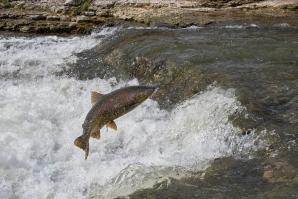
How Drought Affects the American River’s Salmon
Salmon will struggle this year. It’s up to us to help them.
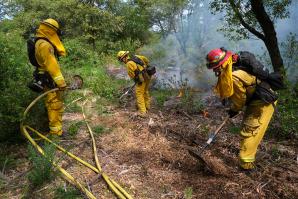
Beating the Burn
California’s plan to deal with deadly and devastating wildfires — including controlled burns, thinning and a restoration economy — is ambitious; is the state up to the task?
Past approaches to forest fires have been a misinformed regime of fire suppression: extinguishing all flames quickly. Now California’s forests are overgrown tinderboxes-in-waiting; the approach is changing, but there’s a lot of work to do.
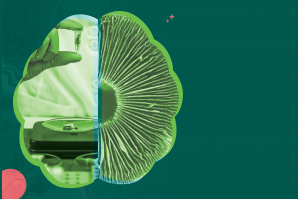
Harnessing Psychedelics for Healing
A UC Davis chemist is developing drugs with all the therapeutic effects of psychedelic drugs — without the hallucinogenic trip.
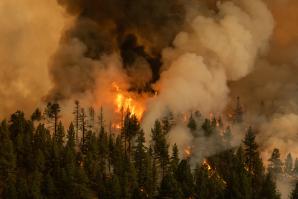
Earth, Wind and the Fire Next Time
Climate change is a factor in California’s rampaging wildfires, but not the only one
Due to human influence, three primary ingredients of wilderness fires are on the rise: the accumulation of biofuels in the forest, rising heat of the planet as a whole, and an ineffective political system of fire management.
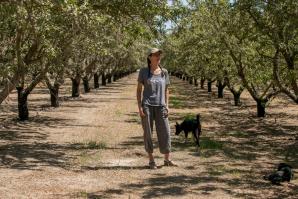
Torture Orchard
Can science transform California crops to cope with drought?
The search is on to help California farmers find less-thirsty tree crops. But will the experiments come through in time as droughts intensify?



